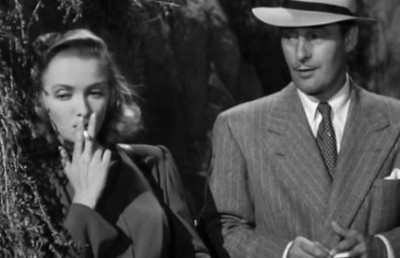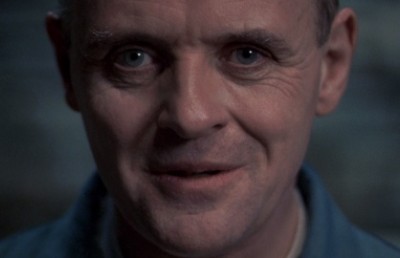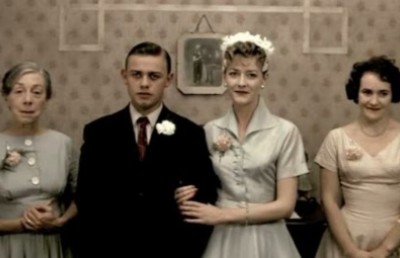The Pleasure of Walter White’s Grotesque Odyssey: Complex Narrative Escalation in AMC’s Breaking Bad (2008-2013)
The Return of the White Male Psychopath

The great English poet John Milton, in his prologue to Samson Agonistes (1671), claims that tragedy “[was] said by Aristotle to be of a power by raising pity and fear . . . to purge the mind of those and such-like passions, that is to temper and reduce them to just measure with a kind of delight, stirred up by . . . seeing those passions well imitated” (707). The Aristotelian notion of tragedy, as synthesized by Milton, conjures a complex yet highly nuanced definition of cathartic pleasure. Since the 1980s and the rise of long-form, complex, nighttime serials, which have been highly influenced by shows such as Hill Street Blues (1981-1987) and The Sopranos (1999-2007), there has been a disquieting tendency to feature straight middle-class white male psychopaths as lead characters. Of the two pivotal television programs mentioned above, HBO’s The Sopranos is clearly most indicative of this trend. Tony Soprano (James Gandolfini), the show’s most memorable character, is a certifiable psychopath and deranged killer — yet also a father, struggling with middle-class issues and suffering from anxiety attacks. The show’s concluding episode “Made in America” (6.21), hotly debated and narratively perverse, refused to disclose Tony Soprano’s ultimate fate. The show’s refusal to offer any puritanical judgment of its lead character is meant to upend both Milton’s and Aristotle’s conception of tragedy. Yet, curiously, it liberates Tony Soprano from facing the moral ramifications of his actions and instead upholds Roland Barthes’ pleasurable text paradigm; this end is accomplished via the subversion of typical American commercial television’s sense of puritanical closure, wherein the hero is rewarded and the villain is punished. The Sopranos boldly refutes this notion and challenges the viewer to posit their own potential epilogue. AMC’s Mad Men (2007-2015), Showtime’s Dexter (2006-2013), NBC’s Hannibal (2013-Present), and, finally, AMC’s Breaking Bad (2008-2013) have all upheld this timeworn tradition. However, Breaking Bad’s pivotal fifth season episode “Ozymandias” (5.14), similar to The Sopranos, frustrates Aristotelian pleasure and inflicts punishment on the show’s main characters and by extension the dedicated viewers who have received gratification in “seeing those passions well imitated” on their television screens. Breaking Bad’s final three episodes, “Ozymandias”, “Granite State” (5.15), and “Felina” (5.16) successfully critique this perverse escalating narrative strategy, perfected by HBO’s The Sopranos and the similarly complex serialized television narratives, wherein viewers find vicarious pleasure in the ultimate success of the straight middle-class white male psychopath.
Psychopath, as a term, is often used hyperbolically to describe a wide variety of individuals. However, to situate the notion in a substantive context the Oxford English Dictionary definition will suffice. The OED describes a psychopath as “[a] mentally ill person who is highly irresponsible and antisocial and also violent or aggressive” (OED). Furthermore, an entry in the Encyclopedia of Social Problems defines it thusly:
emotional/interpersonal and social deviance. Along with social deviance characteristics such as impulsivity, poor behavioral controls, need for excitement, and antisocial behavior are also the characteristics that address emotional and interpersonal areas. Among those are glibness and superficial charm, egocentrism and grandiosity, lack of remorse and empathy, deceitfulness, and shallow emotions (Phillips).
The psychopathic characteristics these white male psychopaths exhibit, from Tony Soprano to Walter White (Bryan Cranston), are varied but consistent with the rote definition. The contours of their behaviour, however, are what truly define these characters as psychopaths. Walter White’s behaviour is indicative of an individual with violent tendencies. One of the first acts of violence within the serial program is a rationalized murder that Walter commits to protect himself from a man he captured (“…and the Bag’s in the River” 1.3). The act itself is painstakingly justified within the events of the episode, yet Walter’s response to the murder represents the first major transgression from mild-mannered high school teacher to violent psychopath. Walter, with the help of his illicit business partner Jesse Pinkman (Aaron Paul), hastily dissolves the murdered corpse in a bathtub. The event goes horribly awry when the acid used for the task eats through the tub and the floor and causes the entire pitch-black comedic affair to spill down into the hallway below (1.3). This morbid gesture not only normalizes the idea of murder and its comical consequences, it also creates a humorous and parodic event to obfuscate the immensity of Walter’s act, which subsequently humanizes the psychopaths while distracting the viewer from the criminal ramifications of the grotesque act. However, the task of rationalizing such behaviour has a modest, albeit narrow, history on television. Tony Soprano’s various business dealings also involved murdering individuals, particularly close business associates and family, for his own personal gain. Since he is the focal point of the narrative, this gesture invites the viewer to partake in the pleasurable satisfaction of murder. It is here that Aristotle’s theories in Poetics begin to emerge as a method to encode murder, violence and antisocial behaviour into commercial televisual entertainment. The viewer’s pleasure is not necessarily derived from the implications of murder. Instead, they are experiencing violent acts, revelling in the vicarious gratification related to unimpeded and uninhibited criminal behaviour; murder has been “mediatized” (Baudrillard 98) via televisual representation, thus the material — socially punitive — implications of these crimes have been wholly abdicated by the viewer. Consequently, Walter’s first substantial venture into psychopathy is not a dramatic moment but a comical one. The viewer is given the panoptic, apathetic view from above, wholly void of social concerns. Breaking Bad’s escalation and exploration of Walter’s psychopathic behaviour is the next evolutionary step in the dramatic synthesis of televisual pleasure.
Alan Sepinwall’s The Revolution was Televised (2012) argues that The Sopranos is often credited as the first step in a revolution for televised drama, particularly pay-cable providers, yet its interior narrative mechanics are no different than the likes of Satan’s plight in Milton’s Paradise Lost (1667) or many other antiheroic tales. The reader/viewer is implicated into the world of the hero, via empathic pathways or emotional insights, and subsequently implicated into the simulated reality of the heroic psychopath. If long-running programs, such as The Sopranos and Dexter, have successfully depicted ruthless psychopaths prior to Breaking Bad, a quandary emerges in regards to the possibility of further pleasure with these particular character-types. The voracious viewing audience has already vicariously experienced pleasure with Tony Soprano and Dexter Morgan (Michael C. Hall); therefore the subsequent viewer’s pleasure relies on the escalation of psychopathic behaviour, which is an inheritance that Breaking Bad must address. These evolving iterations, in particular, seem to have culminated with the show Dexter. The program’s main character is a justified serial murderer, a man imbued with a code from his father — a former police officer — imposing his particular brand of extralegal justice upon those even worse than himself. Media Studies Professor Victoria L. Smith argues that Dexter’s appearance is in direct relation to America’s post-9/11 distrust of virtuous figures of authority in search of its “next superhero” (390). She contends that “[the viewers] turn, it would seem, to that quintessential American outsider and individualist—the serial killer” (390). This argument ignores the hereditary relationship Dexter might share with The Sopranos, but illuminates a critical point in the pleasurable effects of watching a psychopath in a post-9/11 world. The controversial finale of Dexter, “Remember the Monsters?” (8.12), concludes with Dexter as a lumberjack in Oregon, having escaped the consequences of his actions but still haunted by the deeds of his past. The Sopranos avoided narrative closure, again controversially, in the finale “Made in America” (6.21). In that episode, Tony Soprano’s fate is left to the viewer’s imagination as the screen dramatically cuts to black in the middle of Journey’s “Don’t Stop Believin’” — an ultimately ironic gesture since Tony Soprano’s incessant nihilism is made abundantly clear throughout the show’s run. This refusal to address the ramifications of the white male psychopath’s behaviour is indicative of the overall trend that was soon to follow in the wake of The Sopranos. Conversely, Breaking Bad’s final three episodes directly address not only their key subject’s violent actions, but it also creates an indirect punitive discourse with the viewers and questions the validity of their pleasurable experience. The key to unraveling this vicarious pleasure, strictly with Breaking Bad, rests within Walter White’s need to recapture and assert his heteronormative masculinity — similar to both Tony Soprano and Dexter Morgan. Most importantly, these masculine anxieties and concerns exist within a post-9/11 media landscape.
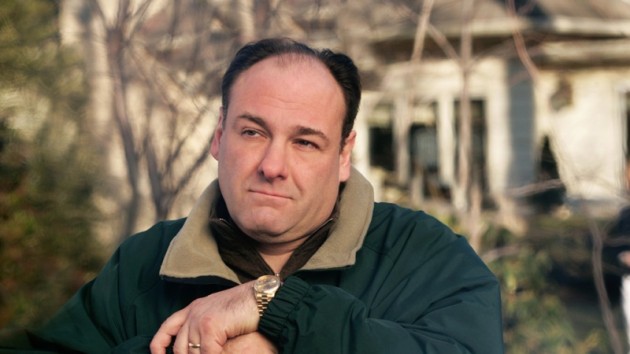
Tony Soprano
A major trait found within the aforementioned commercial American television programs involves white male psychopaths who are initially characterized by their subtle emasculation. In the case of The Sopranos, Tony seeks the help of a female psychiatrist, Dr. Jennifer Melfi (Lorraine Bracco), to overcome his panic attacks and mental distress. In the program’s pilot, Tony is carefully framed through the legs of a feminine statue, looking up helplessly before he is introduced to his psychiatrist (“Pilot” 1.1). Breaking Bad offers a similar form of emasculation in its pilot, when Walter is dutifully — and despondently — masturbated by his wife Skyler (Anna Gunn) when he asks for sexual intercourse. To better illustrate the sense of narrative escalation between The Sopranos and Breaking Bad, the tension between Tony and his female psychiatrist takes nearly six seasons to culminate in a full confrontation that results in their definitive separation. However, the final scene of Breaking Bad’s pilot features Walter recapturing his masculinity, after perpetrating a criminal act, surprising Skyler with his newfound virility. Greven, in “American Psycho Family Values”, labels both Walter White of Breaking Bad and Dexter Morgan of Dexter as beta males (152). The “beta male” moniker can be traced to the proliferation in the 1990s of Adam Sandler’s man-child comedies, which are often punctuated with violence and humour. The distinction made here, though, is that Breaking Bad had yet to fully articulate the depths of Walter’s psychopathic behaviour when Greven published his article. Nonetheless, the notion that Walter might indeed be a beta male brings forward the concept that he attempts to recapture the hyper-masculine alpha male qualities with criminal behaviour. The narrative catharsis, as described by Aristotle, stems from the vicarious pleasure in watching Walter remasculinize and recapture the Freudian phallus. As Victoria Smith argued earlier in reference to Dexter, “[at] once our monstrous other and reliable double, the serial killer constitutes a polluting presence outside of the bounds of the community yet remains recognizably and disturbingly human, reflective of our own innermost, unchecked passions” (390). The audience’s widespread disdain directed toward Walter’s wife provides the clearest example of this empathic commingling. Skyler often protests Walter’s violent acts in the peaceful domestic space and, in doing so, alienates Walter’s supportive audience. In an op-ed for The New York Times, Anna Gunn notes that, “[a]s the one character who consistently opposes Walter and calls him on his lies, Skyler is, in a sense, his antagonist” (par. 5). Gunn’s assertions unpack the viewer’s emotional response to Walter’s seductive psychopathy — Skyler has become the villain to not only her husband, but also to the viewer and their vicariously pleasurable experience. Through a gendered perspective, it is also important that Skyler is both a woman and a mother, serving as the prototypical “blocking” character within the show. Ultimately, the beta male’s most formidable villain is the alpha female. Subsequently, the narrative inclusivity of Breaking Bad, which requires us to empathize with a psychopath and subsequent serial killer, 1 forfeits the necessity for a character that abides by a puritanical moral compass and, in doing so, problematizes a moralist interpretation of the text’s pleasures.
Breaking Bad’s tenuous relationship with moralism also problematizes the source of pleasure in the show’s dramatic turns. Walter White is the focal point of the program’s central thesis and is, therefore, its protagonist. Jesse Pinkman, in the pilot, summarizes this perception when he mentions to Walter: “some straight like you, giant stick up his ass, all of a sudden at age, what, 60 he’s just gonna break bad” (“Pilot” 1.1). It is Walter, then, that provides the conduit for vicarious pleasure. However, the program’s lack of a moralist reading eliminates the typical hero/villain binary reserved for the traditional Joseph Campbell interpretation of the text. 2 As in The Sopranos, anti_-heroes and villains populate the fictive televisual world and further escalate the necessity for gratuitous violence and immorality. The dynamic between the altruistic heroic figure and the dynamic, yet morally corrupt villain can no longer sustain the narratively complex television found on pay-cable channels and some network broadcasts. The result is not necessarily a revolution, as Alan Sepinwall might confer in _The Revolution was Televised, but a more appropriate term is necessary, one that requires a significant explanation: escalation. Tom Stempel, in an article entitled “Revolution and Sex”, convincingly argues that Hill Street Blues constitutes the revolutionary change in American television. He does so to refute the claims of Brett Martin’s Difficult Men (2013) and Alan Sepinwall’s aforementioned book. He argues, “[the] problem I had with much of the writing about The Sopranos was that the writers began to claim that the show had caused a REVOLUTION IN TELEVISION. It hadn’t. An evolution perhaps, but not a revolution” (Stempel). The term he uses represents a more complex theory, yet it is still flawed. Evolution is too often etymologically linked to Darwinist theory and is, therefore, deficient in accurately discerning the nature of television’s progression from Hill Street Blues to Breaking Bad. The environment in which television is situated is strictly commercial and subsequently its ‘evolution’ is framed by the requirement of enhancing pleasurable experiences and drawing specific commercial audiences. These externalities, which are not strictly environmental, create a lasting impact on current and future television programming. The result is not a continuous Darwinian evolution framed by success and failure of a particular species or genus; it is instead a constant escalation of narrative complexity in the nighttime serial genre, which has ultimately manifested in moral ambiguity and immorality. Therefore, evolution and escalation exist in continuity with one another, providing a more accurate etymological framework to substantiate commercial American television’s trajectory. The heroes of pay-cable shows, such as Dexter, The Sopranos, and Breaking Bad, are not required to abide by any social conventions due to the need to escalate dramatic stakes and increase overall pleasurableness for the viewership. Due to the internet-based longevity of current and past programs, television is not merely characterized by its complexity. Such a definition would require an increased modality that is no longer relevant as Netflix, Amazon, and other venues provide many programs instantly. Mittell’s “Narrative Complexity in Contemporary American Television” (2006) provides a succinct definition of narrative complexity in that it represents a redefinition of episodic forms under the influence of serial narration—not necessarily a complete merger of episodic and serial forms but a shifting balance. Rejecting the need for plot closure within every episode that typifies conventional episodic form, narrative complexity foregrounds ongoing stories across a range of genres. Additionally, narrative complexity moves serial form outside of the generic assumptions tied to soap operas—many (although certainly not all) complex programs tell stories serially while rejecting or downplaying the melodramatic style and primary focus on relationships over plots of soap operas, which also distances contemporary programs from the cultural connotations of the denigrated soap genre (Mittell 32).
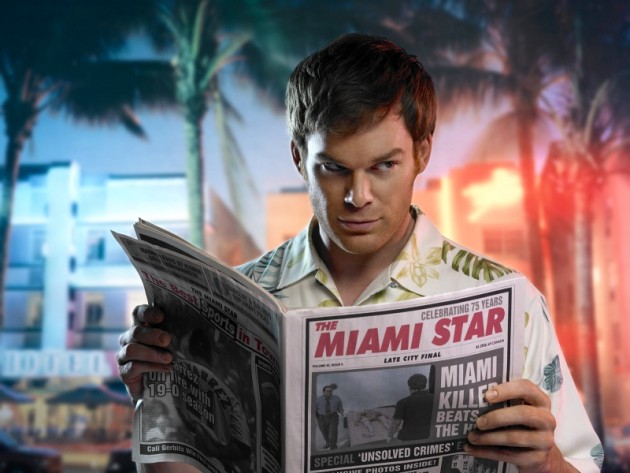
Dexter
New (contemporary) television shows have to assert their credibility, complexity, and edginess in relation to the programs that have preceded them. That is why, as mentioned earlier, the entirety of masculine tension explored over the course of six seasons with The Sopranos was quickly summarized and dealt with in the pilot of Breaking Bad. The course of that vicarious journey is no longer pleasurable because of its hereditary televisual lineage in American television. If a show is to remain narratively complex and pleasurable for commercial audiences, it must continue the escalation until immorality transforms into amorality.
The muddled distinctions between hero, anti-hero, and villain continue to endow American commercial television programs with a complicated test of viewer efficacy. In the case of The Sopranos, Tony Soprano begins as an anti-hero and ends specifically as a villain. The pilot episode features a sequence where Tony nearly runs a man over with his car and then proceeds to beat him senseless, in all possible graphic detail (“Pilot” 1.1). Walter White’s motivations, again escalating narrative complexity in that the protagonist pursues a deeply criminal approach to a typical middle-class struggle, are more nuanced and the contours of those motives provide a healthy part of the dramatic dynamic in the program’s first season. Walter begins as a socially spurned beta male, relegated to the position of high school chemistry teacher after failing to capitalize on a lucrative business deal with former partners. The anger and resentment with the nihilistic world that Walter internalizes throughout the program, which culminates in the show’s finale, prove to be an integral part in his selfish ulterior motives. Once Walter decides to enter into the drug trade, the program provides a coarse interlocutor (and yet another, albeit quite different, beta male) in Jesse Pinkman. At first, the moral implications of Walter’s actions are intertwined with the already criminal, immature, and gangsterish behavior of his younger cohort. Yet, soon thereafter, in the season one finale “Crazy Handful of Nothin’”, Walter asserts his alpha male ambitions when he concocts and utilizes an explosive substance to eliminate his drug-dealing rival, Tuco Salamanca (Raymond Cruz). This dramatic shift in power again encapsulates the necessity for escalation in dramatic television, further entrenching the notion of heredity in televisual pleasure. A similar shift occurs in The Sopranos, where the audience learns that Tony has been utilizing Dr. Melfi for his own ends, which completely reconstructs the viewer’s perception of the show’s carefully calculated patient/doctor relationship. Dr. Melfi finally discerns that Tony has used their sessions to essentially improve his psychopathic behavior (“The Second Coming” 6.19). The various experiments that Tony conducted, as a result of their conversations, were merely demonstrative of a psychopath synthesizing human behaviors. Most importantly, Dr. Melfi mentions that observing Tony provides a “vicarious thrill” (6.19), curiously similar to the viewer’s experience. In The Sopranos, the paradigm shift finally places Tony in the role of the absolute villain and the remainder of the season (only two episodes) quickly instills all the necessary moralist punishments while refusing to provide adequate consequences. Breaking Bad’s rush to shift its similar power dynamic over the course of its pilot episode illustrates the escalation that is also reflected in Breaking Bad’s ascending rogue’s gallery of Latino villains.
Mark A. Lewis’ “From Victim to Victor: Breaking Bad and the Dark Potential of the Terminally Empowered” provides the clearest sense of how the show’s ultimate villain, Gustavo Fring (Giancarlo Esposito), functions in relation to Walter White. Lewis describes Fring as a “a Machiavellian meth distributor” (662) and smartly cites the villain’s most significant comments directed at Walter: “When you have children, you always have family. They will always be your priority, your responsibility. And a man, a man provides. And he does it even when he’s not appreciated or respected or even loved. He simply bears up and he does it. Because he’s a man.” (“Mas” 3.5, cited in Lewis 662). These comments are the culmination of Walter’s journey to recapture the perverse masculine ideal thrust upon the beta male in a post-9/11 world. The ideal has been perverted due to its rabid nihilism and immorality; accomplishing Fring’s ideal requires one to achieve one’s goals by any means necessary, even if they include dealing drugs and murder. Each successive villain in Breaking Bad has previously provided some form of television’s heteronormative — and amoral — masculine ideal. Tuco represents the blustering and overcharged alpha male, while Gus represents a more educated and deliberate version of a similar ideal. The major point of differentiation between Walter and Gus is their approach to power. In the penultimate episode of the fourth season, entitled “End Times” (4.12), Jesse accuses Walter of poisoning a young boy named Brock — the son of a close friend of Jesse’s. Walter concedes that he is incapable of such an act, but Gus Fring has a history of poisoning his enemies. Jesse ultimately relinquishes his accusation and Walter convinces him to seek revenge on Gus (“End Times” 4.12). However, in the next episode, entitled “Face Off” (4.13), the final shot of the episode is a careful rack in to an extreme close-up on the plant that was used to poison the child, which is located in Walter’s backyard. This astounding reveal, which is the last shot of the entire season, completely reconstructs Walter’s journey and the perception of his character. Of course, this moment also occurs after Gus Fring is violently eliminated in an explosion concocted by the show’s protagonist. Walter has, therefore, subsumed and internalized Gus’s villainous — and quite clearly Machiavellian — strategies to his own end. At the conclusion of the episode, Walter’s humanity has been entirely evacuated. Lewis argues, “[Walter] has been transformed by cancer into a person who manifests many of the worst features of his own malignancy” (668). Yet the viewer is still asked to wholly sympathize with this figure for another, somewhat prolonged, fifth and final season. However, the program does not attempt to negatively shift the empathic paradigm until “Ozymandias” (5.14), where Walter is finally emasculated completely and the power of his journey is — yet again — drawn into another, much more illusory context.
Walter White’s eventual emasculation does not simply occur as a prompt removal of the phallus in the events of “Ozymandias” (5.14), the antepenultimate episode of the series. John Fiske’s Power Plays Power Works (1993) evaluates masculine power in three forms: “the power to influence others more than being influenced by them; the power to be independent and self-sufficient; and the power to achieve visible goals and to receive public recognition of that achievement” (27). Walter, categorically, is bereft of each of these characteristics in the events of this episode. The examples will follow in Fiske’s chronological order: Firstly, Walter loses the power to influence others when he realizes that the Neo-Nazi biker gang will not heed his instructions and they decide to murder his brother-in-law DEA Agent, Hank Schrader (Dean Norris) (“Ozymandias” 5.14). In the moments that follow, Walter is left utterly silent and the physical power paradigm has shifted in favor of the biker gang; the self-sufficiency is also removed when, in an effort to save his brother-in-law, Walter attempts to bargain with the Neo-Nazi gang by offering a portion of his immense earnings — at that point, literally barrels filled with cash (5.14). The gang, heavily armed and equally ruthless, decides that they will take the money anyway, leaving a single token barrel filled with money for Walter to roll through the desert on his own (5.14); The final moment of emasculation occurs when Walter returns home disheveled to retrieve his wife, son, and baby daughter. He is highly distraught and tries to force them to leave. They refuse and his wife, Skyler, fights him off with a knife — wounding his hand severely — before he leaves in a rush with their innocent and defenseless daughter, while his wife feebly pursues on foot before falling to her knees in tears (5.14). The scene at Walter’s home is the ultimate culmination of consequences for the actions that have led the show’s characters to this juncture. The result is a central figure — our resident psychopath, carefully domesticated by the program’s parodic treatment of criminal violence and its consequences — left stranded to sort through how to handle the dire situation. Walter’s family is being harassed by the authorities, Hank’s wife is without her husband, the Neo-Nazi gang has Jesse Pinkman held hostage to cook methamphetamine, and Walter is driven away in a mysterious van — his cancer having re-emerged — and a ‘fixer’ named Ed (Robert Forster) places him in a cabin in faraway New Hampshire. The decentralized matrices of power have consequently erupted and Walter White’s grotesque odyssey has shifted into its final, intentionally less pleasurable denouement.
The polarity of the show’s central conceit is reversed after “Ozymandias” (5.14), which forces the audience to address the empathic entanglement that has informed the show until that very episode. Wrathall argues that Walter’s connection with the audience is problematized “when we realise that his actions are no longer enterprising, chemistry-teacher-like solutions to cash-flow problems but in fact heinous crimes in which he takes not just pride but a kind of fascistic glee” (35). Therefore, the moral implications of the show’s inclusivity transmute the events to radically recontextualize the viewer’s relationship with Walter White’s decisions. The psychopathic skill of Walter’s actions, both highly clever and extremely calculated, were merely self-serving and willfully dangerous. The once sympathetic post-9/11 beta male on a mission to preserve his family’s security has completed transformed into a megalomaniacal psychopath not unlike the episode’s title reference to Shelley’s poem “Ozymandias” (1817) that offers the reflections of a long dead arrogant king on his empire ground to dust. This conversion severs the connective tissue between Walter and the audience, ultimately judiciously damning his decisions and condemning him to the show’s insular and unique form of judgment. Additionally, “Aristotelian poetics postulates that the audience of sublime tragedy experiences awe, pity, and terror as it witnesses the hero’s downfall, brought on by the pride that precipitates horrific occurrence” (Greenberg par. 6). We, along with the main character, have become complicit co-conspirators and are consequently subject to the necessary punishments. In the episode that follows, “Granite State” (5.15), this punitive measure is realized in one of the show’s most meditative episodes. Walter White is left stranded in the New Hampshire wilderness to reflect on his sins. A neo-Nazi gang imprisons Jesse Pinkman in a bunker. Skyler White is under house arrest and being closely watched by federal agents (“Granite State” 5.15). As a result, the viewer is likewise forcibly committed to reflect upon the actions of each respective character and made to endure the consequences of their decisions.
Walter White’s source of power — guile, pragmatism, and ruthlessness — has proven to be both illusory and persuasive. His eventual downfall, triggered in “Ozymandias” (5.14), is compelling but carefully framed within the mode of Greek tragedy. The hero suffers a fatal downfall that is partially triggered by a sense of self-acceptance, in the Aristotelian sense, but he is still very prominently the central heroic character of the program. The cultural momentum that guides the central narrative of the show serves to both empower and police the creative pathways available to the program. Walter White is a villain and should, therefore, be punished for his misdeeds, but only insofar as they are palatable to the entrenched audience that has been rooting for his character since the program’s pilot episode. The daring nature of “Ozymandias” and “Granite State” are completely undermined by Walter’s eventual fate, which is posited as a brave death as the culmination of a heroic gesture. He manages to save Jesse Pinkman, a character bereft of independent agency for most of the show, and eliminate the neo-Nazi villains before dying by his own hand (“Felina” 5.16). Walter is, ultimately, killed by one of his own inventions and is never incarcerated or punished in any formal institutional way. Walter, at one point, pleads for Jesse to kill him once he has been saved from the Neo-Nazi’s, yet Jesse refuses outright and leaves Walter to die alone (“Felina” 5.16). In the show’s five season narrative arc there are thousands of suggested victims that suffered from Walter White’s potent product. Beyond that reality, the viewers are left to sort out the morality of the show while the program has abdicated all responsibility for either redeeming or condemning its antagonist/protagonist for the sake of pleasurableness and narrative gratification. Therefore, in some superficial way, Breaking Bad validates and rationalizes Walter White’s behavior through this morally ambiguous ending. The show’s final episode, “Felina” (5.16), ends with a mellow rock song from the 1970s era band, Badfinger. The track, “Baby Blue”, is a peppy love jingle that reverberates over a scene where Walter White idly wanders through a meth lab (“Felina” 5.16). This final moment ultimately reveals that Breaking Bad was a story about one man’s love affair with both his occupation and his perverse empire. Despite the fact that he dies in this room, and the song is perhaps ironic, the audience is never left with a conclusive moral stance on Walter’s actions. This conclusion is an inversion of The Sopranos, where Tony’s ultimate fate is withheld and the audience is refused closure. With Walter White, we are shown the conclusion of his life yet it is merely an overwrought, carefully orchestrated musical sequence featuring an elaborately planned crane shot, leading to the final credits. The concluding image of the show features a succinct shift in point-of-view as the camera cranes up above Walter, who is on his back and dying or dead, lingering above him and forcing the viewer into the panoptic view as police officers step over him, clearly seeking out a more conspicuous-looking criminal (“Felina” 5.16). All of Walter’s efforts to remasculanize and establish his glorious empire has failed and he begins to approach the poetic downfall of Shelley’s “Ozymandias”. Narrative closure and moral closure are conflated in this case:
Accordingly, it is with narrative closure that the greatest pressure for the text’s preferred reading may be activated. . . . In such celebratory endings, narrative closure works as a powerful means of expressing positive cultural myths and an attractive invitation to accept them. (Thwaites et al. qtd in Krijnen and Meijer 358)
If the climactic moment of the show features the main character dying peacefully before facing criminal punishment, this sequence becomes the primary source of discomforting closure for viewers due to its overarching sense of poetic justice — Walter has unwittingly transformed into his own form of punishment.
Furthermore, dramatic television programming ultimately emerges as an amoral medium because the viewers are never materially implicated in the consequences of the character’s illicit actions. This development is due in large part to narrative escalation, a clear side effect of increased viewer efficacy. A simulated version of moral objectivity, filtered through televisual entertainment, allows the viewer to focus primarily on the acts of violence, which are typically depicted in the most dramatic form possible. Breaking Bad uses various cinematic methods — as evinced with Gus Fring’s death in “Face Off” (4.13) — to increase the overall impact of violence on the show. This approach anesthetizes the viewer to Walter’s violent actions by emphasizing their cathartic or narrative value. Conversely, the domestic space is where the one unimpeachably moralist character — Walter’s son, Flynn (R.J. Mitte) — receives the least amount of attention. Breaking Bad allows the domestic space to be a safe haven from violence, which is typical for dramatic television, as Banks argues, since the house might “be seen as a nuisance or disrupter, a distraction from more ‘real’ concerns” of the central characters (172). Walter’s entire life hinges on a specific moment in “Ozymandias” (5.14) when violence invades the domestic space and his wife cuts his hand, forcing him to leave his family and face the consequences of his actions, re-asserting a strictly moral reading of the program. Walter White is no longer the amoral hero of the show; he has transformed into an immoral psychopathic villain, mirroring Gus Fring. Dramatic pay-cable programming is often categorized through a myriad of specific storytelling tropes, yet the fundamental necessity for the perversion or the deconstruction of morality is aggressively pervasive in post-9/11 television, even in a narratively complex show such as Breaking Bad.
The dissolution of American commercial television’s stranglehold on the time and place that their respective programming is available has shifted the evolutionary model from a vertical plane into one that is horizontal — viewers are now able to access programs not only when they air, but when they want to, which shifts television’s power into the viewer’s realm. Tom Stempel’s description of television’s evolution occurs in a paradigm that is reliant upon vertical linearity as well as heredity; by his own admission, Stempel notes:
Hill Street Blues was not a one-off. It was followed by what I called in Storytellers to the Nation: A History of American Television Writing the Children of Hill Street (Stempel, 1992: 237-245): St. Elsewhere (1982-1988), which did for a hospital what Hill Street Blues did for a police precinct; L.A. Law (1986-1994); thirtysomething (1987-1991), China Beach (1988-1991), and on into the nineties not only with NYPD Blue, but E.R. (1994-2009) (Stempel).
The active descriptor in the above quotation is “followed”, marked dubiously by the apt moniker that the latter shows are all “Children” of Hill Street Blues. Breaking Bad’s “Ozymandias” (5.14) is both the culmination and the most recent evolutionary step in Stempel’s process. It provides the capstone for the white male psychopath — portentously alluded to by the episode’s title, which references Percy Bysshe Shelley’s poem about a long-forgotten, once eminently powerful empire that is now a “colossal wreck, boundless and bare” (l. 13). This middlebrow reference, rather aptly, provides the context by which escalation shall emerge as the only possible method of evolution in American commercial television. Currently, Hill Street Blues, The Sopranos, Dexter, and Breaking Bad are available contemporaneously via live streaming and DVD box sets. Stempel’s “children” are now commingling with their ancestors, as well as their progeny. The current struggle between complex television programming is, therefore, one of delineation and superiority. Subsequent programs, such as HBO’s Game of Thrones (2011-Present) and Netflix’s House of Cards (2013-Present), have emerged within the contemporaneous crowded televisual market and have been forced to escalate Jason Mittell’s definition of complex television in an effort to attract viewers. The complex matrices of power that are subverted in Breaking Bad’s “Ozymandias” (5.14) are on full display as the white male psychopath is now one of many featured on these programs.
Game of Thrones, in particular, has a wide variety of murderous psychopaths that range from a 17-year-old girl, Sansa Stark (Maisie Williams), who aspires to be serial murderer, to a 41-year old princeling, Jamie Lannister (Nikolaj Coster-Waldau), who is a murderer, rapist, regicide, and shares an incestuous relationship with his equally barbarous —albeit in a much different fashion — sister. Walter White’s many achievements in Breaking Bad are overshadowed, yet again, in Game of Thrones’ pilot episode. In that episode, Jamie Lannister pushes young Bran Stark (Isaac Hempstead Wright) out of a window in the final sequence, breaking his back and crippling him permanently (“Pilot” 1.1). In the same fashion that Breaking Bad succinctly dealt with long-standing dramatic issues developed over the course of six seasons in The Sopranos, Game of Thrones asserts its pleasurable authority by further escalating Mittell’s definition of narrative complexity through merely adding more psychopaths; be they murderous young girls, a conniving patricidal little person, or a sadistically vengeful queen. American commercial television’s resounding logic appears to be that, if people find vicarious pleasure in watching Walter White’s adventures, every substantive character on future complex narrative programs — from this point forward — should be an iteration of the white male psychopath.
John Milton’s synthesis of Aristotle’s theoretical framework provides a simplified illustration of narrative pleasure through typical dramatic forms. Pay-cable television shows — and other media distributors, such as Netflix, AMC, and HBO — have utilized this system and yet audience efficacy has forced an escalation in narrative complexity. When Hill Street Blues was released, venues such as Netflix, Hulu, and even DVD box sets were inconceivable and, therefore, the program operated within an insular dramatic bubble. With the evolution in commercial distribution, the lines of distinction have been blurred and the incestuous relationship between programs and providers has resulted in a desire to escalate beyond one another in complexity. Where Stempel, Martin, and Sepinwall see a revolution carefully embroidered within an evolution, Breaking Bad’s “Ozymandias” is demonstrative of an escalating template that continues forward with programs like Game of Thrones and House of Cards. These television shows feature not only singular psychopathic characters, as in Dexter or Breaking Bad, but an entire ensemble of lying, cheating, stealing, murderous, and conniving psychopaths jockeying for positions of power in a complex geopolitical world — one based in fantasy and one based in a fictional version of our reality. The white male psychopath still reigns supreme in both cases, yet the ensemble destabilizes the typical definition of a program driven by the central white male psychopathic character. However, ultimately, the central pleasurable conceit heavily relies on the viewership receiving vicarious pleasure in the violent and deceitful actions of the white male psychopath. The Sopranos is widely perceived as one of television’s highest critical achievements, having won 18 Primetime Emmy awards over the course of 6 seasons. To repurpose Stempel’s evolutionary contention, it seems appropriate to conclude that the critical rewards system of television — which includes Emmys and various other accolades — has empowered the white male psychopath as lead character ever since Tony Soprano graced television screens with his curiously violent and controversial behavior. It might not have been a revolution, but it was most certainly a diabolical creative pivoting point that culminated in Breaking Bad’s further escalation and deconstruction of the hero/anti-hero/villain’s journey of Walter White and his doomed ilk. Now that Breaking Bad has concluded, the narrative inheritance of escalation has fallen upon Netflix’s House of Cards and HBO’s Game of Thrones; two shows which continue the trend of escalation that is now rife with psychopaths of all genders, races, colors, and creeds.
Works Cited
Banks, Mark. “Spaces of (in)Security: Media and Fear of Crime in a Local Context.” Crime, Media, Culture: An International Journal 1.2 (2005): 169-87. Web. 27 November 2013.
Baudrillard, Jean. “The Virtual Illusion: Or the Automatic Writing of the World.” Theory, Culture & Society 12.4 (1995): 97-107.
Fiske, John. Power Plays Power Works. New York: Verso, 1993. Print.
Greenberg, Harvey Roy. “The Shows of Violence (Introduction).” Journal of Popular Film and Television 26.2 (1998): 50-1. Web. 18 November 2013.
Greven, David. “American Psycho Family Values.” Millennial Masculinity. Ed. Barry Keith Grant. Detroit: Wayne State UP, 2013. Print.
Gunn, Anna. “I Have A Character Issue.” The New York Times 08 August 2013: n.p. Web. 27 November 2013.
Krijnen, Tonny, and Irene Costera Meijer. “The Moral Imagination in Primetime Television.” International Journal of Cultural Studies 8.3 (2005): 353-74. Web. 28 November 2013.
Lewis, Mark A. “From Victim to Victor: “Breaking Bad” and the Dark Potential of the Terminally Empowered.” Culture, medicine and psychiatry 37.4 (2013): 656-69.
Milton, John. “Samson Agonistes.” The Complete Poetry and Essential Prose of John Milton. Eds. William Kerrigan, et. al. New York: Random House, 2007. 707-761. Print.
Mittell, Jason. “Narrative Complexity in Contemporary American Television.” The Velvet Light Trap 58.1 (2006): 29-40.
Phillips, Nickie D. “Psychopath.” Encyclopedia of Social Problems. Ed. Vincent N. Parrillo. Thousand Oaks, CA: SAGE Publications, Inc., 2008. 731-32. SAGE knowledge. Web. 22 July 2014.
Shelley, Percy Bysshe. “Ozymandias.” Masters of British Literature: Volume B. Eds. David Damrosch et al. London: Pearson Longman, 2008. 476. Print.
Stempel, Tom. “Revolution and Sex: The Evolution of TV”. Offscreen 18.4 (2014). Web.
Wrathall, John. “The Secret Life Of Walter White.” Sight and Sound 23.9 (2013): 34- 36. MLA International Bibliography. Web. 20 May 2014.
Notes
- Various websites, such as The Daily Caller and Radio Times, peg the number of deaths Walter White is responsible for as roughly 200 — including those who died in a mid-air collision caused by Walter indirectly, and excluding those who might have died off-screen due to the use of his methamphetamine. Given by the end of the series his business has taken a global approach to distribution these off-screen deaths might number in the thousands. ↩
- Campbell provided a Jungian analysis the classical — Homer, etc. — hero’s journey in The Hero with a Thousand Faces (1949). ↩



